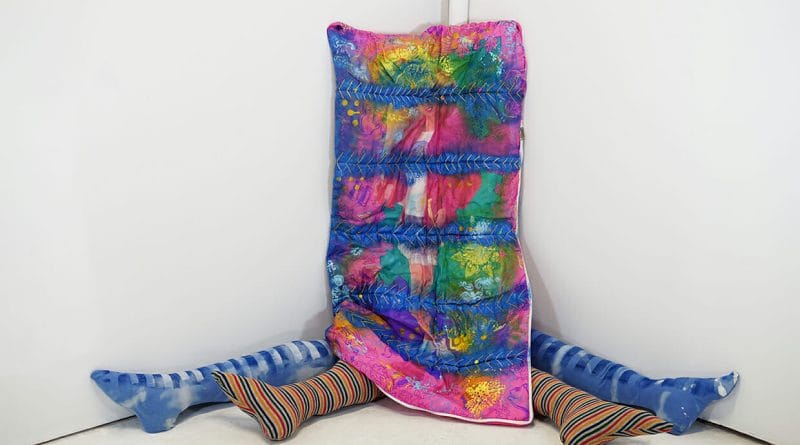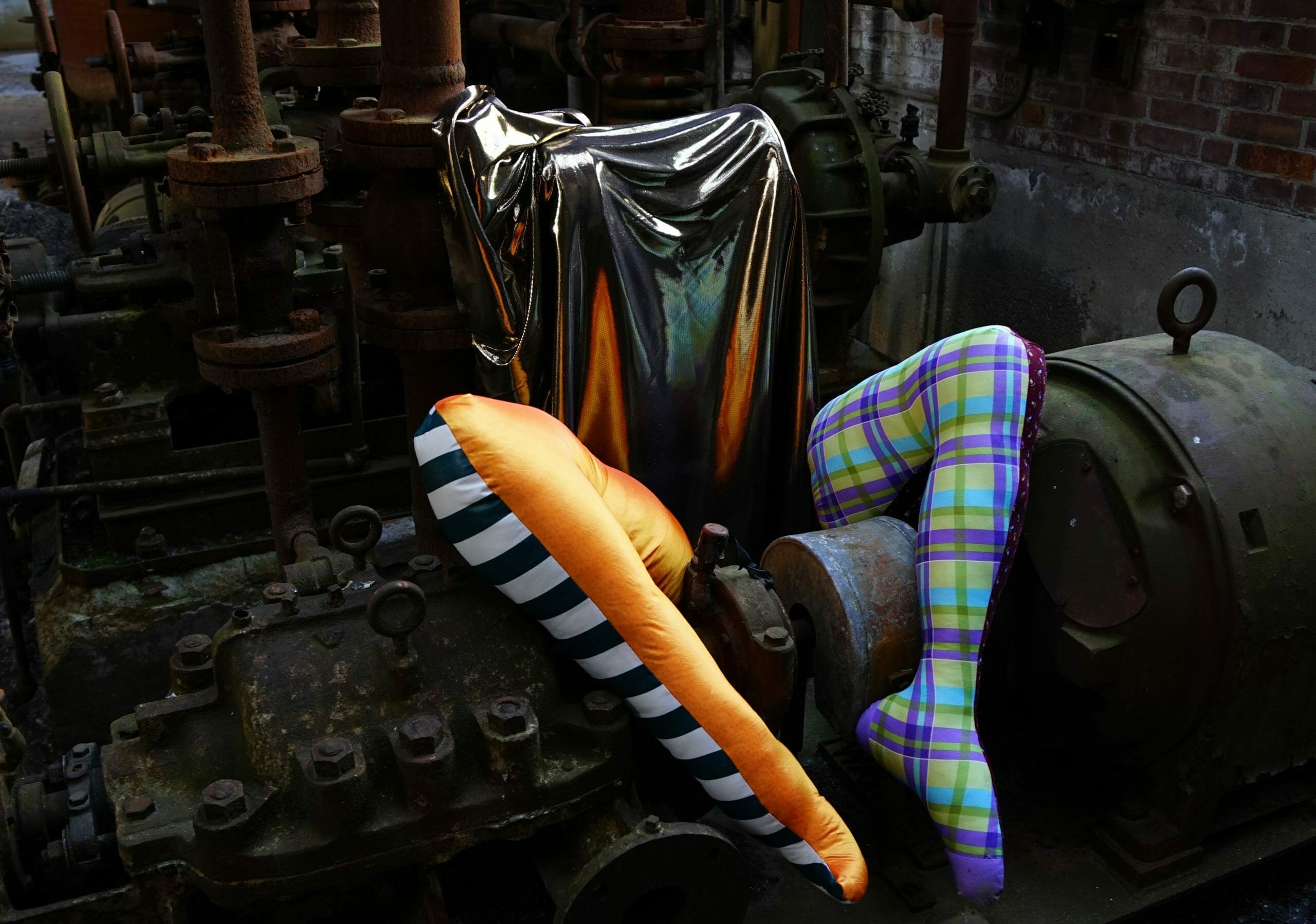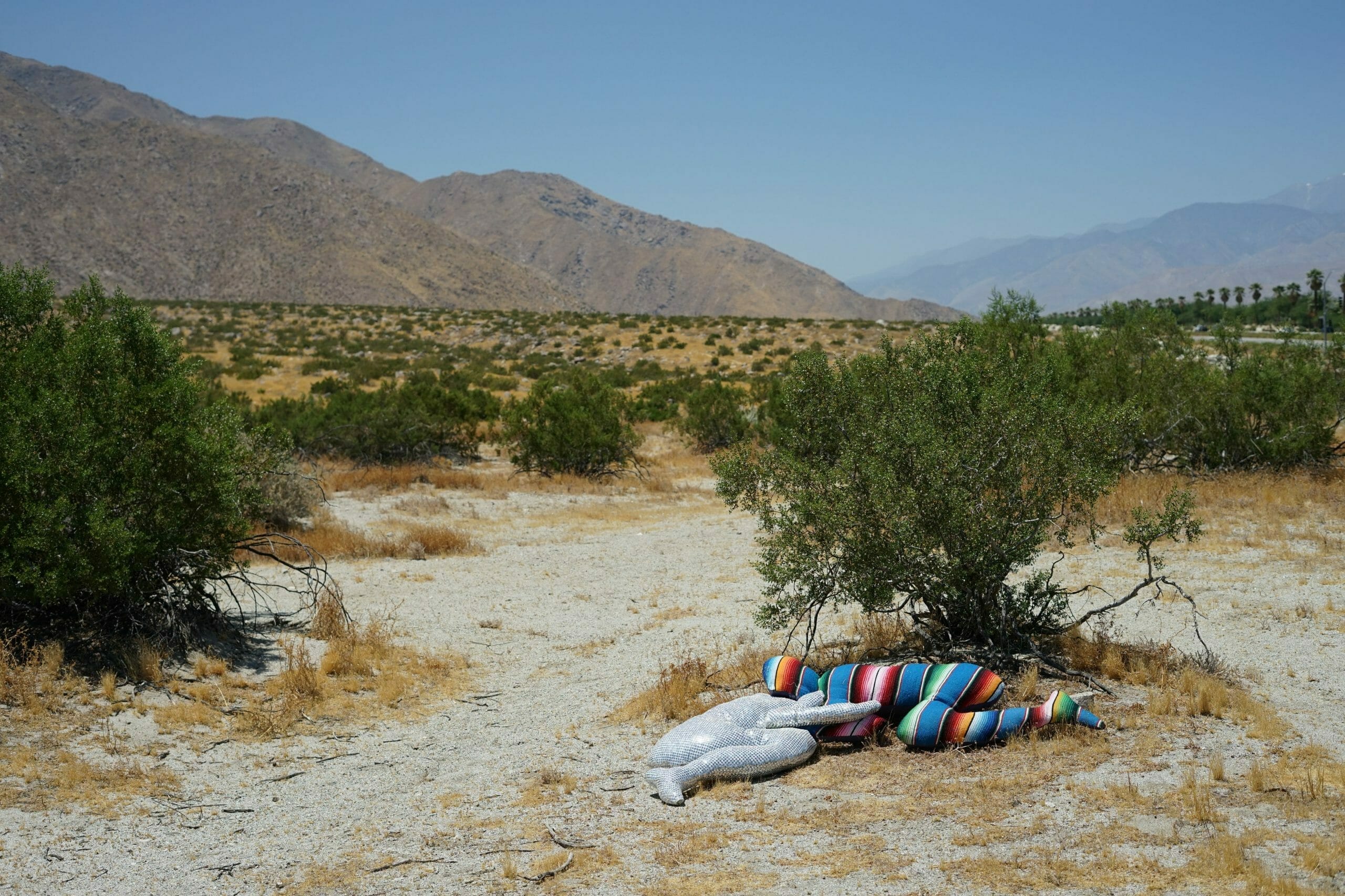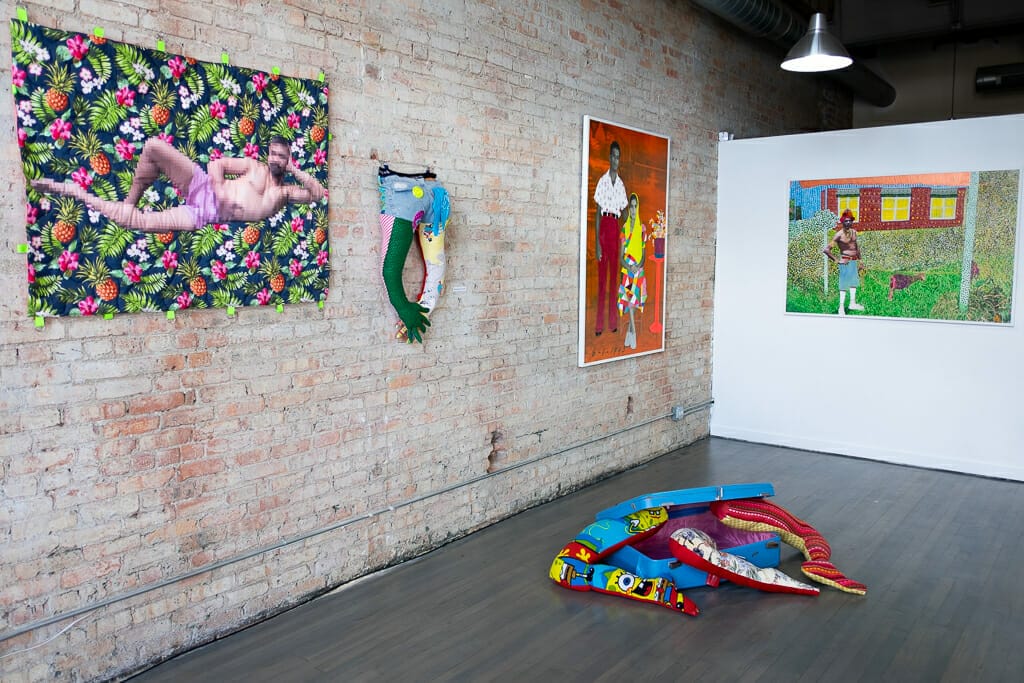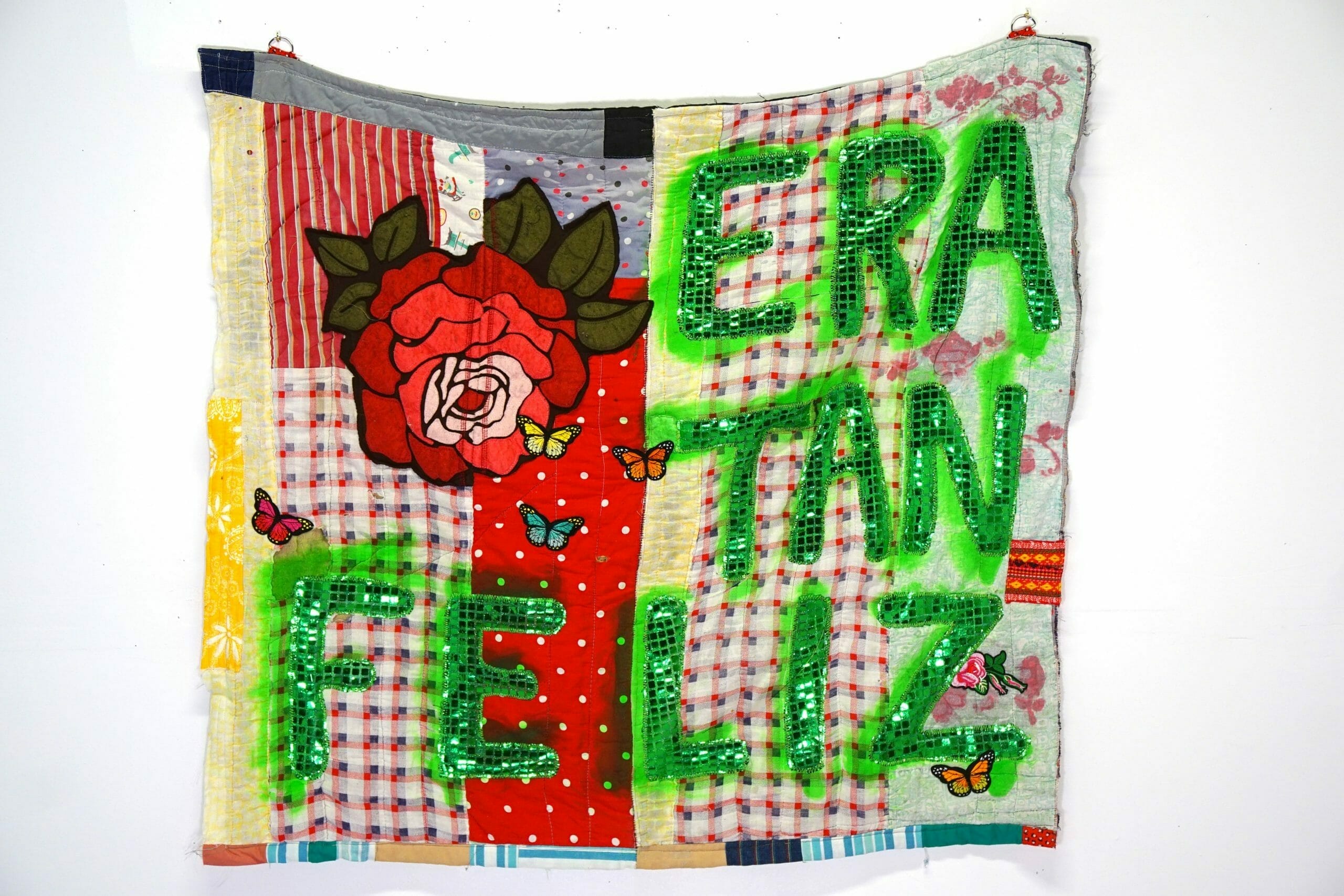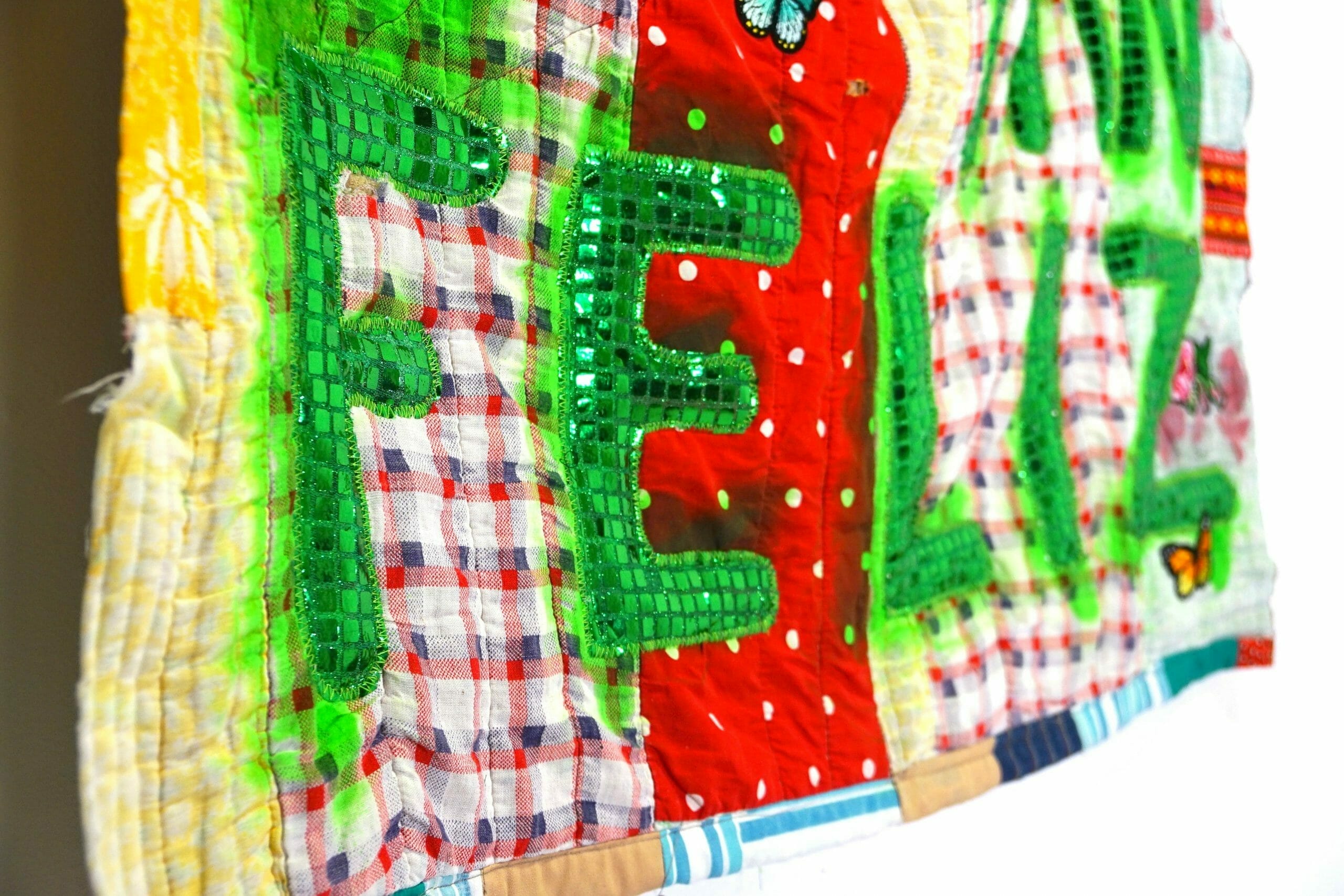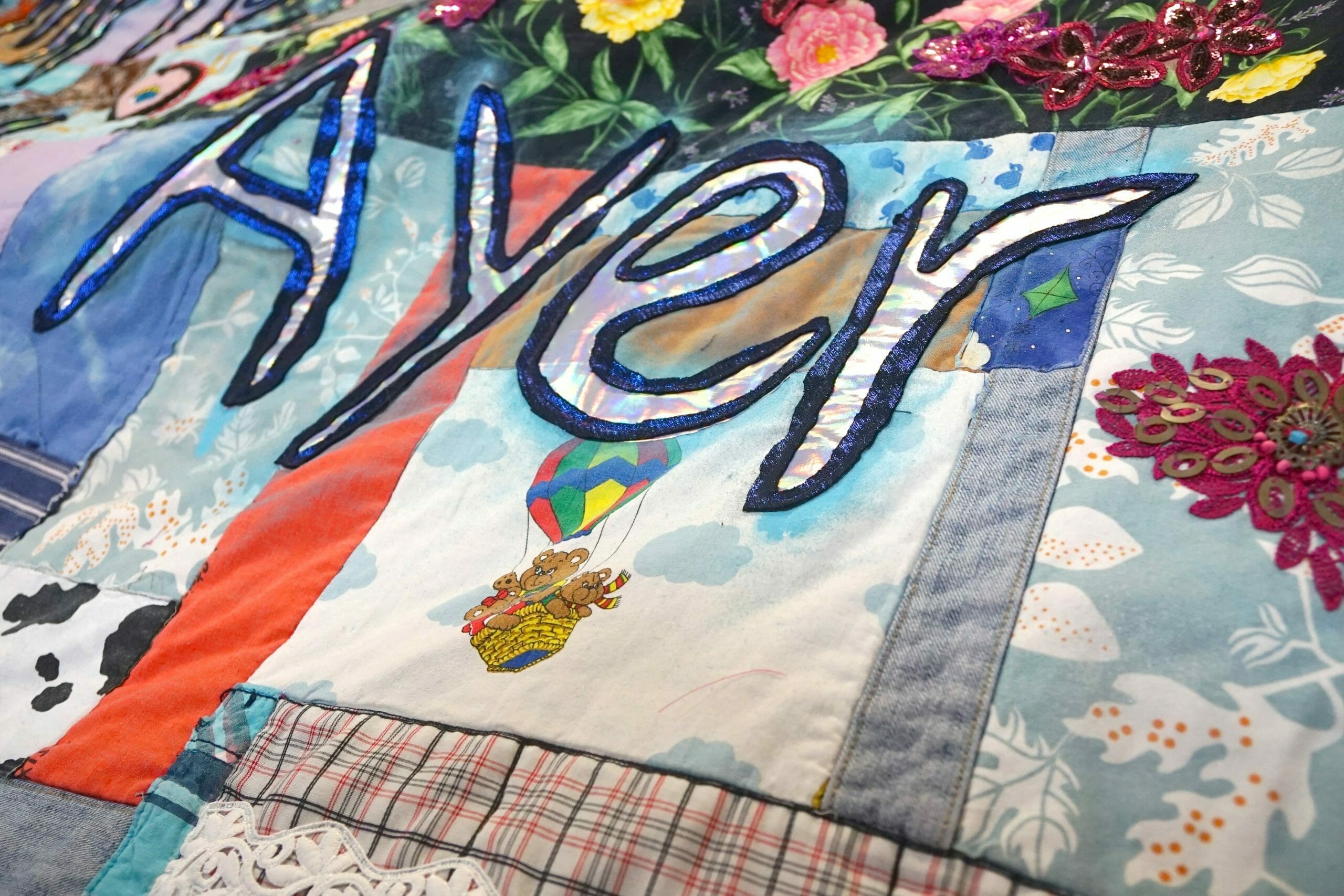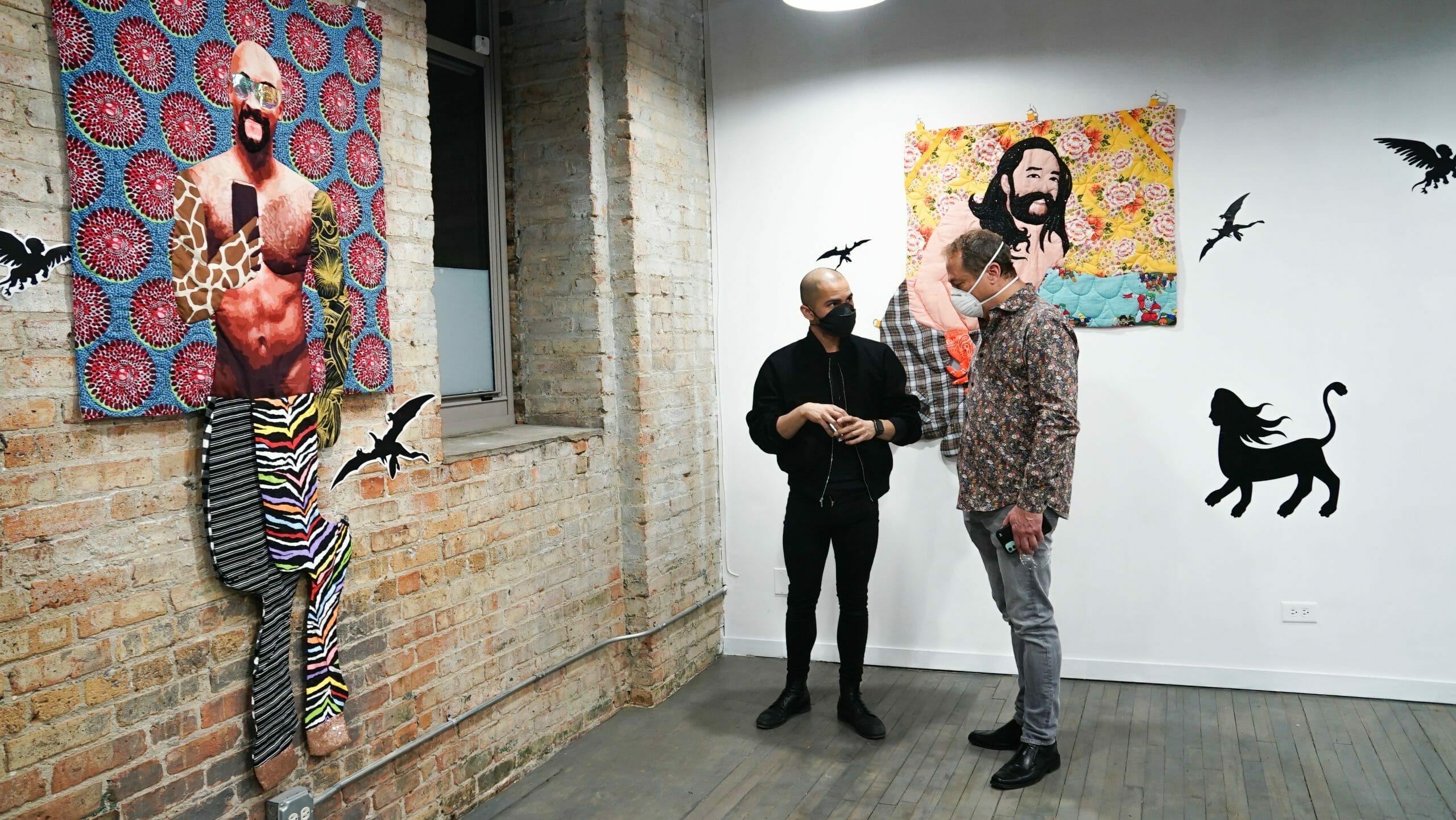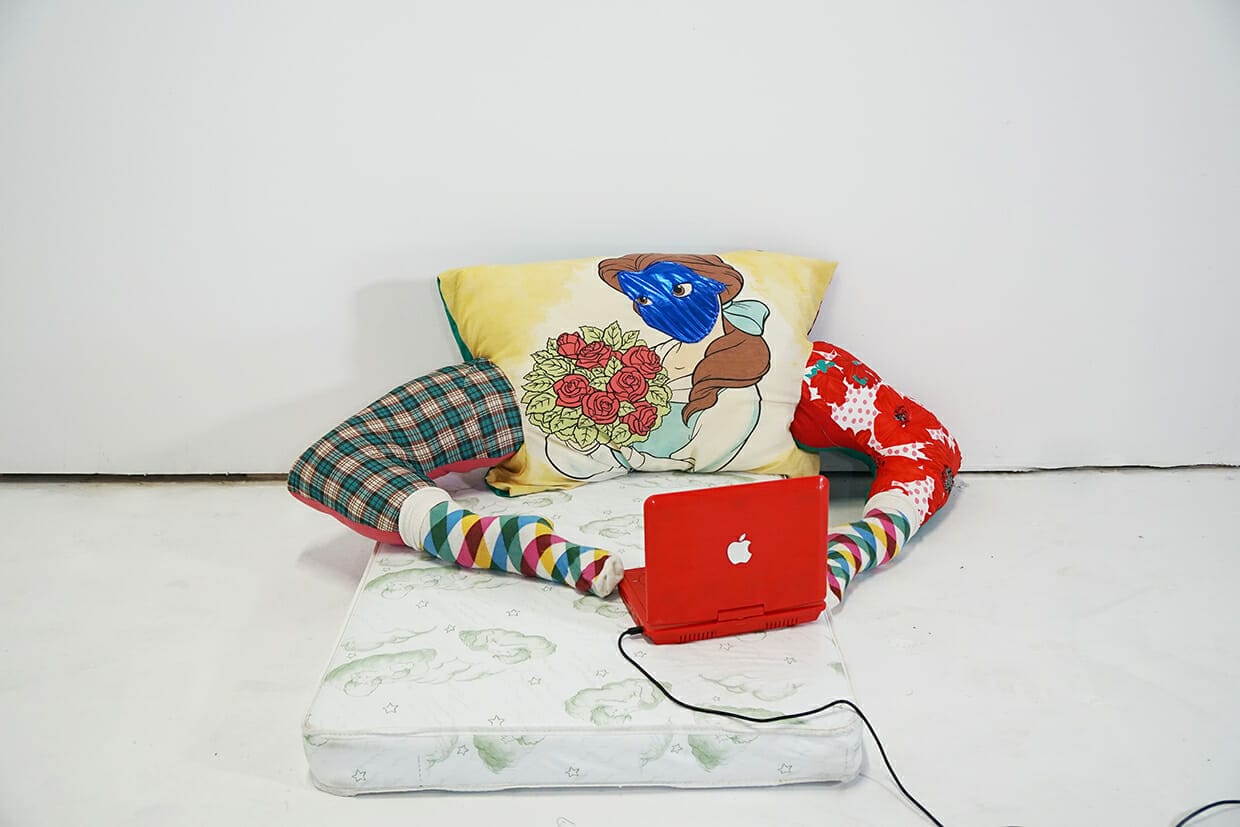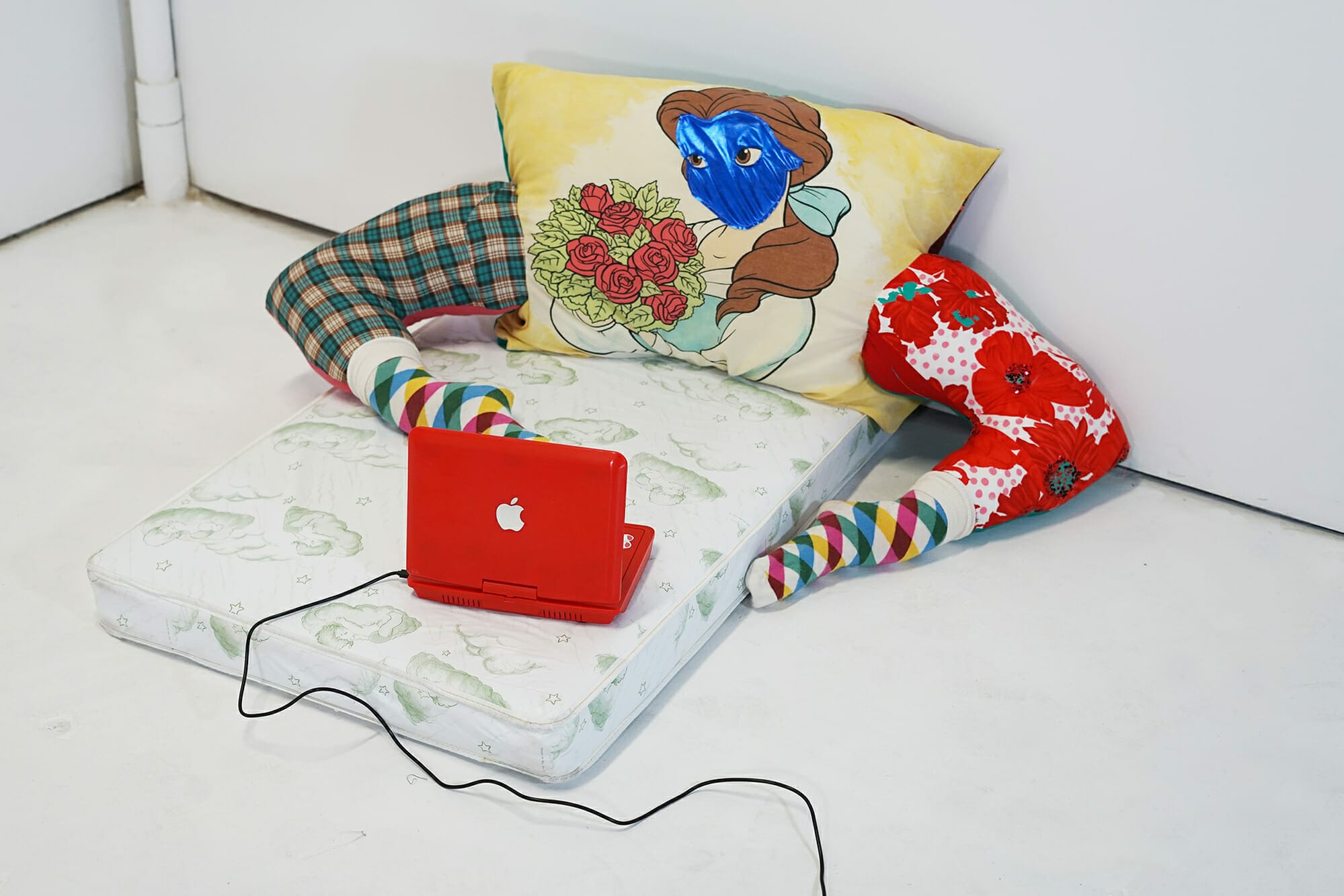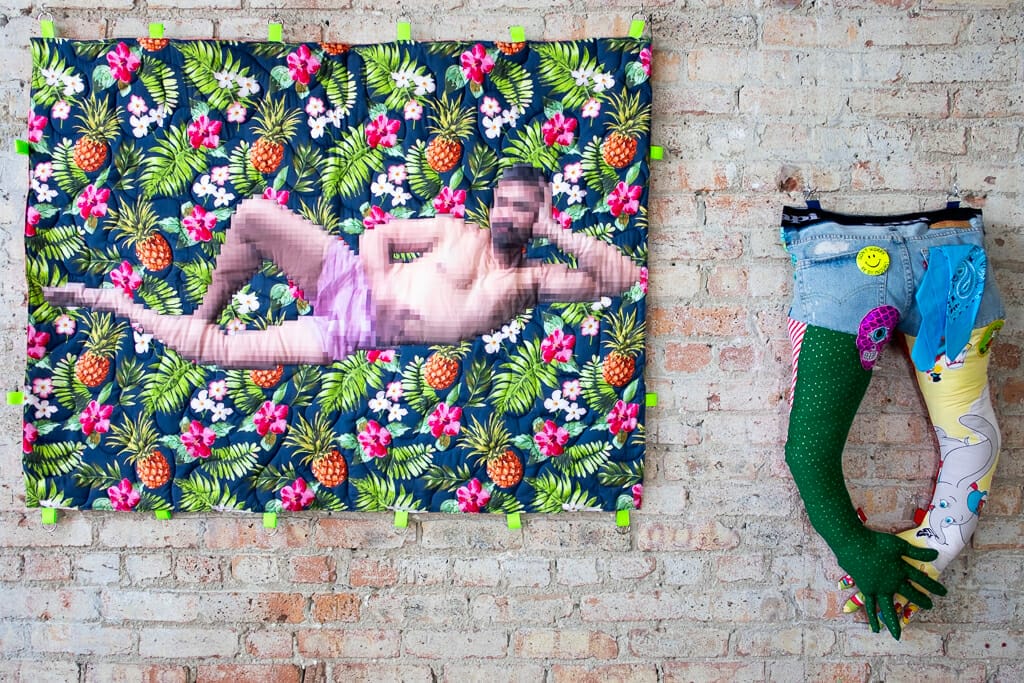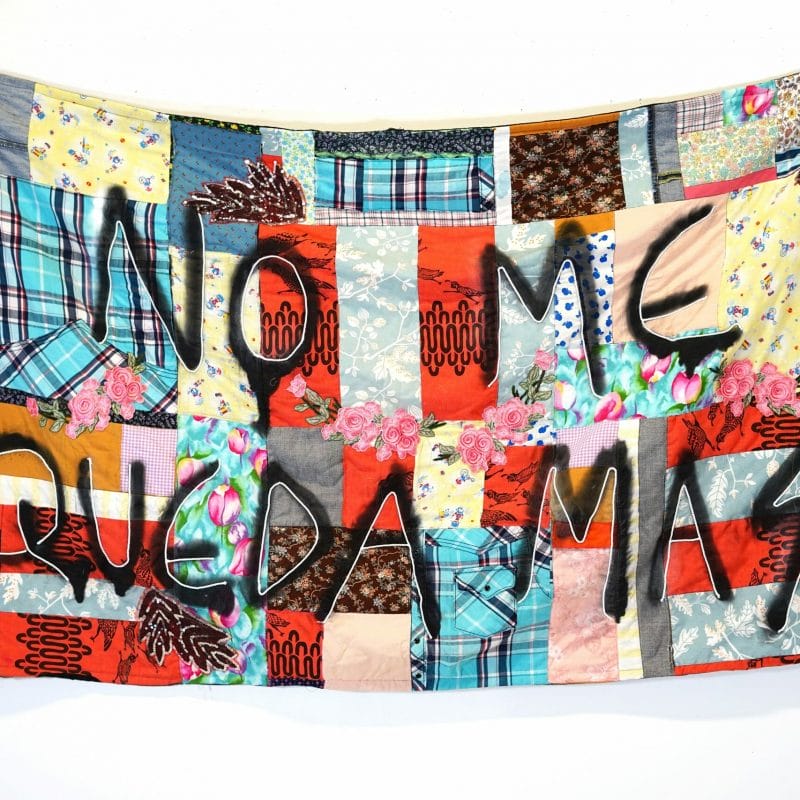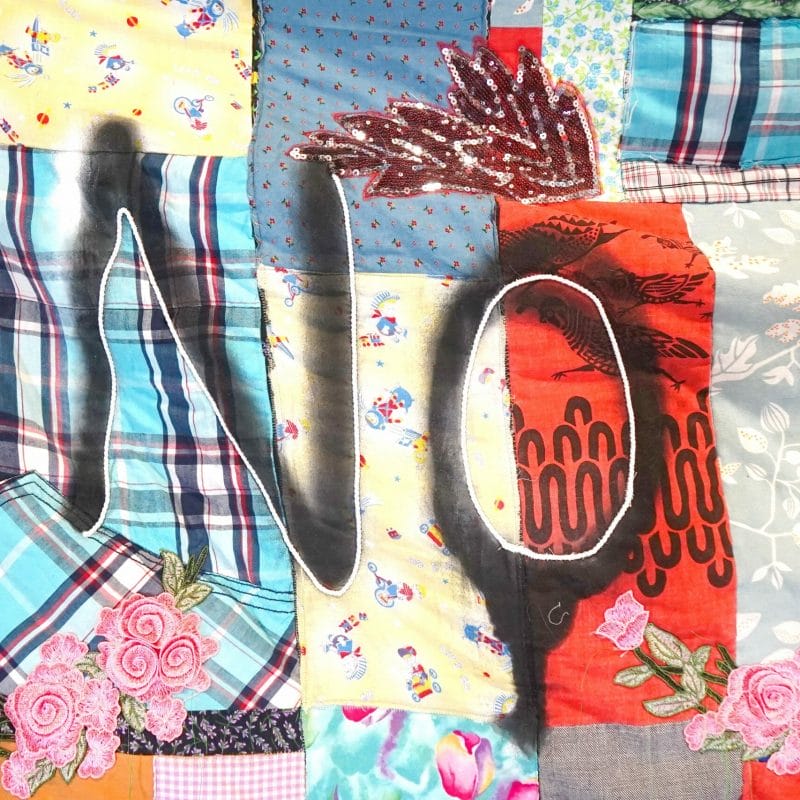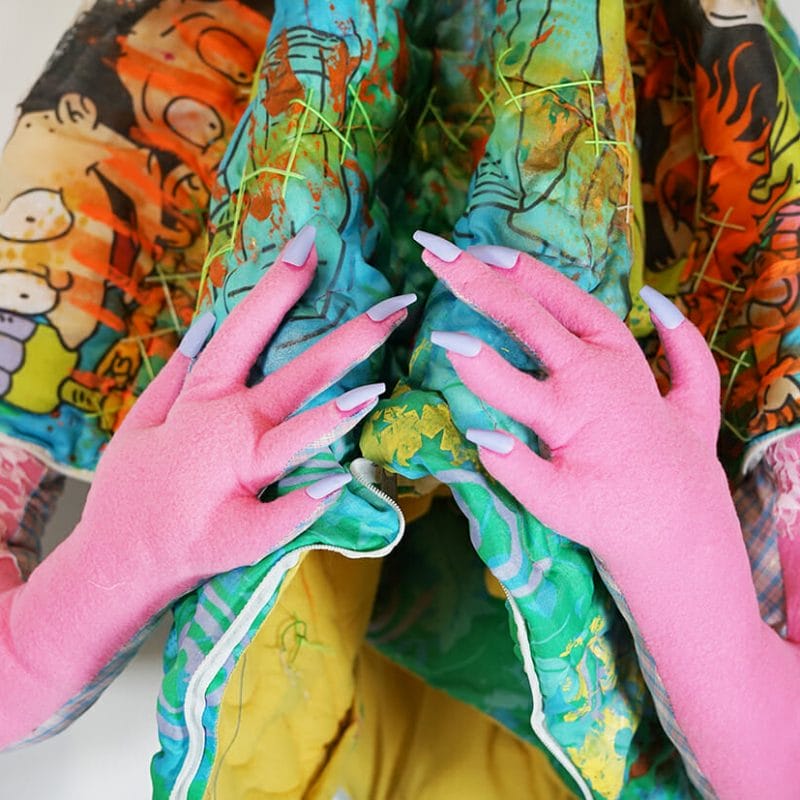ALEXANDER HERNANDEZ
*Featured photo: Seven Minutes in Heaven, 2021. Fabric remnants, spray paint, embroidery thread, found sleeping bag, courtesy of the artist.
Alexander Hernandez, a textile artist from Oxaca, Mexico, born in 1986, graduated from the Rocky Mountain College of Art and Design in Lakewood, CO, and received his Master’s degree in Fine Art in 2012 from the California College of the Arts in San Francisco, CA.
Hernandez’s soft and playful textile collages, quilts and installations portray and give visibility to complex issues such as gender issues and HIV+ survival in an ironic and lively way through the interweaving and overlapping of different techniques and styles. His works challenge commonplaces and destigmatise the experience of being HIV positive, but also speak of immigration, of identities that arise from the encounter between different cultures, and of acculturation processes that are never neutral.
Hernandez’s work has been shown in numerous exhibitions in the United States, Canada and Australia, receiving awards and grants. The artist’s experiences in renowned art residencies include MASS MoCA in North Adams, MA; Museum of Quilts and Textiles. San Jose, CA; Root Division in San Francisco, CA; Elsewhere Museum, Greensboro, NC; Mark Rothko Art Center in Latvia and the Vermont Studio Center in Johnson, VT among others.
During the day, you divide your time between your profession as a social worker and as an artist. How interdependent are these two aspects of your life? How much do they feed and inspire each other?
I started working with HIV+ youth in 2014 in a rough part of San Francisco. Because of gentrification and drug problems in the city there was lots of homeless folks sleeping in the streets. I would have to walk through sleeping bodies and limbs sticking out of blankets or sleeping bags to get to work. In addition, one of my job duties onsite was to check up on the youth. Often, they were sleeping and seeing their vulnerable bodies and the people sleeping outside inspired me to make soft sculptures. I started making small figures that were informed by my love of Louis Bourgeois’ work and my work-life experience. In 2016 I started making life size figurative versions as well as limbs and body parts started sneaking into my patchwork and quilting works as well. Sometimes your day job informs your art practice, and you can bring your art into your every day life as well.
Why the textile medium?
Originally, I got into painting in high school and that was a way to express my internal struggles of coming out gay. It was in undergrad that I took a fiber class and I fell in love with textiles. I started adding fabrics into my paintings but then I eventually completely became a fiber artist. Also, when I moved to San Francisco I lived with a group of Drag performers and I taught myself how to enhance an outfit through embellishment using sequin, lamé, beads, etc. Sewing became a better way to convey my identity in my art by using fabrics and materials from each one of my identities. I can sew a Mexican embroidery on top of an American quilt pattern while embellishing it further with queer aesthetics. Being a first-generation immigrant, I never felt like I belonged in the US. And going back to Mexico to visit I also didn’t feel completely at home neither. I always felt like an outsider everywhere I went. Patchwork has been a way to weave different aspects of my identities to create my world in which I can comfortably belong to.
Your work is strongly autobiographical. What are the main themes that you deal with and that are close to your heart? How has the way of representing them changed over time, from your early works to your more recent ones?
Patchwork became a way to stitch together all these different aspects of my upbringing and influences to create poignant art objects that show my reality. In my work you will see fragments from pop culture, nostalgia, real life events can also help shape someone’s identity on top of their cultural heritage and upbringing. My work is about a queer Latinx immigrant experience and the acculturation process that some of us undergo. I hope that other immigrants and others that have felt like outsiders can relate to my work. My earlier work went from painting to textile and sculpture. But recently I have started introducing painting elements back into my work. I started using spray paint and acrylic on my work reminding myself that things become cyclical in your art practice. Also that we are always recreating ourselves whether using new experiences or older ones that you reintroduce into your life.
.
Stayin’ Positive, an important exhibition, full of work and content, which you had to postpone because of the pandemic. Can you tell us about it?
Staying Positive started as a series of textile portraits investigating the identities of people of color living with HIV. I used fabrics, patterns, motifs, colors and imagery showcasing each person’s cultural and social background to demonstrate how they navigate their POZ identity as a means of survival throughout their various communities. This show was aimed to dismantle the social stigmas of being positive and showcases this community as survivors rather than victims. It was supposed to go up on May 29th, 2020 as part of the Queer Cultural Festival but was postponed indefinitely due to the pandemic. During this whole ordeal I started making changes to my pieces to reflect the POZ community’s commitment to staying healthy. By adding magical animal limbs and other body parts I transformed my subjects into chimeras. They evolved into fantastical creatures enabling them to adapt to change and chaos. Eventually I was able to showcase these pieces in a solo show at FLXT contemporary in Chicago in the spring of 2021.
How do you use pop culture icons, characters and language in your work?
I told myself if I can stitch different fabrics and patterns together, why couldn’t I introduce digital and pop cultural elements as well. I also started to print on fabrics using pictures that people sent me on dating apps, or snapshots from memes. These are all things that have also helped shape my identity and capture glimpse of moments during my lifetime so far. Furthermore I started to incorporate found objects such as toys, socks, shoes and other items that feel appropriate to what I am creating at the time.
Is there a project to which you are very attached, and which has represented an important moment in your professional path?
When I did a residency at Elsewhere Museum in Greensboro, North Carolina; I created pieces that I couldn’t take with me. This is when I started photo document my sculptures and pieces in installation shots that used the location as an element of my work. I have taken photos at most residencies I have done and other locations I have traveled to. I am not sure exactly what I am going to do with all these photographs, but I feel like it’ll be some important in the future. Each photo also captures my growth as an artist which I feel captures my trajectory so far.
In your sculptures, in your textile collages, a humorous and playful vein emerges, even though you talk about important issues, or perhaps because of that. How does humour help you convey these messages?
Historically LGBTQ folks have used humor to detonate physical and violent confrontations in grade school or public places. Humor has also been a way Latinx folks deal with trauma. It feels natural for me to use humor in a similar way to seduce viewers. Once the viewer is hooked on my art pieces they slowly start to unravel the darker themes and digest it in their own way like you do in therapy.
What are you working on at the moment?
I am currently doing an art residency at the New Museum Los Gatos in Silicon Valley. I was allowed to go through their collection of historical objects, and I was interested in their quilts and other textile objects. There was lots of nostalgia in the collection so I started listening to Spanish songs my mom would put on while she was cleaning the house. These songs didn’t make sense as a kid, but now I can relate to them as an adult having lived through similar heartbreak experiences my mom has gone through when she was my age. The show is titled Retazos which is Spanish for scraps. The exhibit runs June 3 – October 9, 2022 with the reception being on June 4th.
